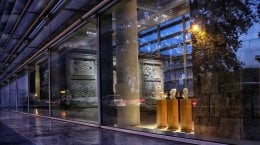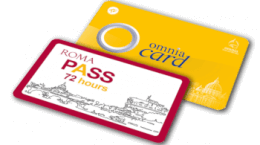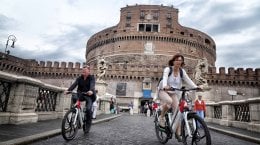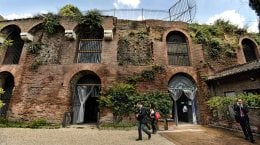Official Reseller Rome and Vatican – Jubilee 2025
Famous Squares
The squares of Rome represent historical, architectural and tourist accents, which constitute a large part of the special atmosphere of the “Eternal City”
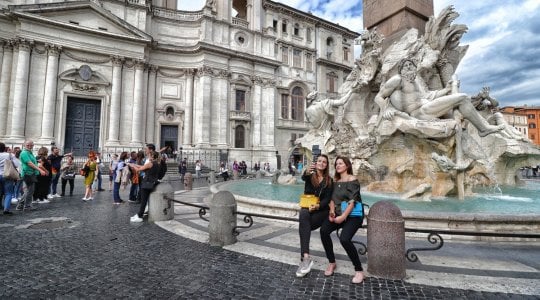
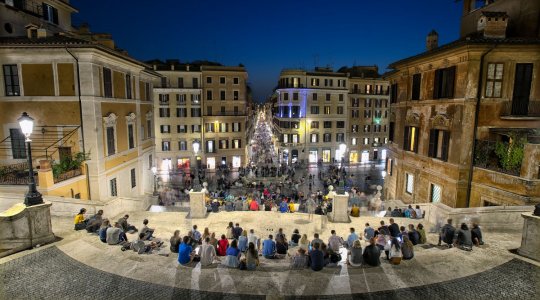
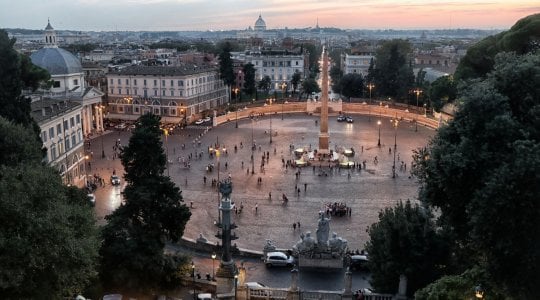
Piazza del Popolo
Piazza del Popolo is undoubtedly one of the most famous squares in Rome.
It is located in the north of the city, near the Parioli zone and it is at the foot of the Pincio hill, near the wonderful Villa Borghese.
This square, like many other landmarks in Rome, allows you to clearly see the different architectural styles that have followed one another over the centuries. This happens because of the many changes wanted by the pontiffs over the centuries.
The square hosts three churches: The Basilica of Santa Maria del Popolo erected in the 11th century at the behest of Pope Pasquale II and subsequently modified by Pope Sixtus IV, who in the late 1400s entrusted the works to Baccio Pontelli and Andrea Bregno making it a renaissance church. In the mid-1600s, Pope Alexander VII entrusted Bernini with the renovation of the Basilica, which gave the building a Baroque imprint. Inside there are works by Caravaggio such as the Conversion of Saint Paul and the Crucifix of Saint Peter but also numerous frescoes by Pinturicchio. Not only that, there are also architectures by Raphael and Bramante and some sculptures by Bernini.
The other two churches in the square are called the twin churches and are respectively named Santa Maria di Montesanto and Santa Maria dei Miracoli, built by the will of Alexander VII. Bernini completed these two buildings with the collaboration of Carlo Fontana in a baroque style.
At the center of the square, it is possible to admire the imposing Obelisk Flaminio and three wonderful fountains.
The square can be reached by metro from Flaminio Metro Station, from Flaminio stop by tram and from Piazzale Flaminio Station.
Piazza Venezia
Piazza Venezia is also undoubtedly among the symbolic places of the capital as well as the nerve center of the city. In fact, this square, located at the foot of Campidoglio, is the crossing point of five of the most important streets of Rome, namely Via dei Fori Imperiali, Via del Corso, Via C. Battistini-Via Nazionale, Via del Plebiscito-Corso Vittorio and Via del Teatro di Marcello.
The appearance of the square mainly refers to the restoration works that took place between the 19th and the 20th century for the construction of the Vittoriano, which dominates the square.
As mentioned, Piazza Venezia is characterized by the imposing national monument to Vittorio Emanuele II, also known as Vittoriano or Altare della Patria, which was built by architects Giuseppe Sacconi, Ettore Ferrari and Pio Piacentini using completely white marble.
You can reach this square by metro getting off at Colosseum Metro Station, which is a few hundred meters away, or on foot, walking on Via del Corso, or down Via Nazionale, etc.
Piazza di Spagna
Topped by the famous stairway of 136 steps of Trinità dei Monti, Piazza di Spagna is also one of the symbols of the city of Rome.
Located in the northern area of the capital, this square houses Bernini’s Barcaccia fountain and the museum home of the poet John Keats, where he lived until 1821.
What characterizes this place, however, is the imposing staircase strongly desired by Cardinal de Tencini but inaugurated by Pope Benedict XIII in 1725, the year of the Jubilee.
At the top of the stairway, there is then the Church of the Trinità dei Monti, a place of worship that is a symbol of the city, part of the five French-speaking churches of Rome, where the mass is also celebrated in French. In the square, there are also the museum homes of Giorgio de Chirico and the famous fountain of Babuino.
The square can be reached by metro by getting off at Spagna Metro Station, but also on foot if you walk along Via dei Condotti and Via delle Carrozze.
Piazza Navona
Piazza Navona is undoubtedly one of the most famous places in the city of Rome. Commissioned by the Pamphili family and in particular by Pope Innocent X, this square has the typical plan of the Roman stadium. Its plant, in fact, is rectangular and rather elongated, while one of the short sides appears curved.
Its initial destination, around A.D. 86, was to host the Greek athletic games that the Romans did not particularly appreciate because they were considered immoral to them. This square was built to celebrate the grandeur of the Pamphili family.
Today this square is one of the symbols of Baroque Rome. On its surface, it is possible to admire the works of famous Italian artists including the Fountain of the Four Rivers created by Bernini. This marvelous work in the center of the square represents the Danube rivers, the Ganges, the Nile and the Rio de la Plata.
At the center of the fountain stands an imposing granite obelisk. This 16.54-meter high structure was erected on 12 August 1649. The obelisk was placed on a base so that it could appear even higher.
The church of Sant ‘Agnese in Agone, located in front of Bernini’s fountain, was created by the two famous Italian architects and artists Francesco Borromini and Girolamo Rainaldi. It seems that this church was built right where the saint was martyred in A.D. 304. She was guilty of refusing the son of the Prefect of Rome.
On the south side of the square, the Fontana del Moro was built in 1574 by the will of Gregory XIII Boncompagni. Finally, the frescoes inside the Gallery of Palazzo Pimphilj.
According to the tradition, Piazza Navona is the frame of the Christmas market.
The Rome squares are always open
To reach this enchanting place you can take advantage of several metro and bus lines or, if you are nearby, it is easily reachable on foot. In particular, if you depart from Roma Termini Station it is possible to go to Piazza Navona by taking the bus n. 64, getting off at Corso Vittorio Emanuele stop and then continuing for about 400 meters on foot. The other public transport lines that lead to Piazza Navona are: n.46, n.571, n.492, n.62, n.628, n.64, n.70, n.81, n.87, n.916 and n.C3. Near this square, you can also visit the Pantheon, Castel Sant’Angelo and Palazzo Chigi.
Piazza Navona, Campo de’ fiori, Piazza del Campidoglio, Piazza di Spagna, Piazza della Minerva, Piazza del Popolo, Largo Argentina
